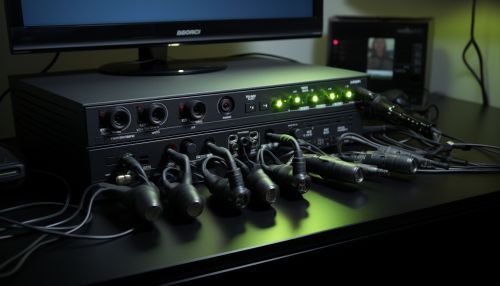Network video recorder
Overview
A network video recorder (NVR) is a specialized computer system that includes a software program that records video in a digital format to a disk drive, USB flash drive, SD memory card or other mass storage device. Unlike a Digital Video Recorder (DVR), which requires a direct connection to the video capture card, an NVR is designed to record video streams from the network it is connected to. This allows for greater flexibility in terms of recording and viewing footage, as it can be accessed remotely over the internet.


History
The development of NVRs is closely tied to the evolution of Internet Protocol (IP) cameras. As IP cameras became more prevalent in the late 1990s and early 2000s, the need for a dedicated device to record and manage these network-based video streams became apparent. This led to the creation of the first NVRs, which were essentially networked versions of the traditional DVRs used with analog cameras.
Functionality
The primary function of an NVR is to record and store video footage from networked IP cameras. However, modern NVRs offer a range of additional features, including live viewing, video playback, alarm notifications, and more. Some NVRs also include advanced analytics capabilities, such as motion detection, line crossing detection, and facial recognition.
Architecture
An NVR system consists of three main components: the IP cameras, the NVR itself, and the viewing station. The IP cameras capture video footage and transmit it over a network to the NVR, which records and stores the footage. The viewing station, which can be a dedicated monitor or a computer, is used to view the live or recorded video footage.
Types of NVRs
There are two main types of NVRs: standalone NVRs and PC-based NVRs. Standalone NVRs are dedicated devices with built-in software, while PC-based NVRs are software programs that can be installed on a standard computer.
Advantages and Disadvantages
NVRs offer several advantages over traditional DVRs, including higher image quality, greater flexibility in terms of camera placement, and the ability to use wireless IP cameras. However, they also have some disadvantages, such as higher cost and the need for a robust network infrastructure.
Future Trends
As IP cameras continue to improve in terms of image quality and functionality, it is likely that NVRs will continue to evolve as well. Future trends may include increased use of cloud storage, advanced analytics capabilities, and integration with other security systems.
